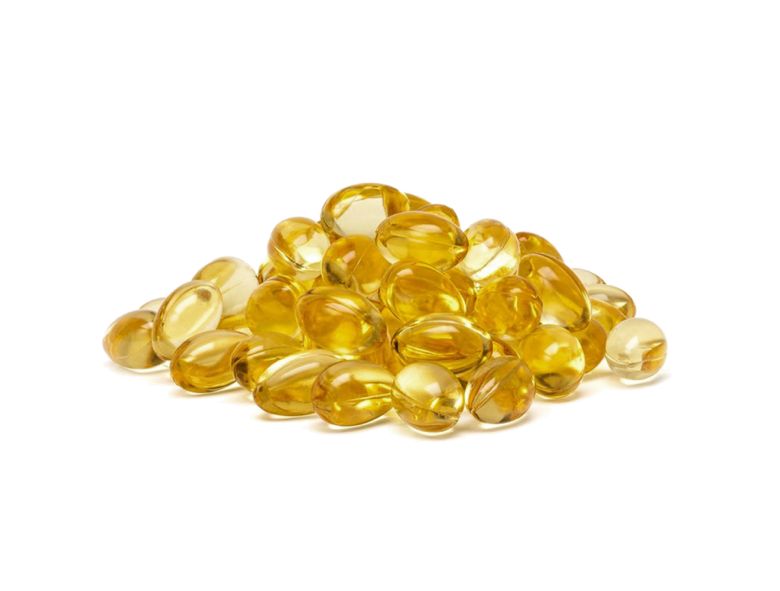Creatine has a particular scientific attention demonstrating its effect in increasing hypertrophy and muscle strength as well as an influence in decreasing the muscle atrophy frequent in sports injury recovery (see previous post). The evidence regarding the effects of omega-3 fatty acids (Omega-3 FA), on the other hand, is not as extensive and robust, but is beginning to make 'strides' towards their inclusion in a supplementation protocol aimed at optimal recovery.
In the context of sports injuries, Omega-3 GAs are recognized for their anabolic properties at the skeletal muscle level (1), with the attribution of such properties coming from the incorporation of eicosapentaenoic acid (EPA) and docosahexaenoic acid (DHA) into the phospholipid membrane of muscle cells (2).
The verified changes are associated with the activation of cell signaling proteins involved in anabolic processes, namely in the increase of muscle volume and strength (3, 4).
 In this context, a recent study has shown that supplementation with OMEGA-3 attenuated muscle atrophy during 2 weeks of immobilization, which was reflected by a decrease in muscle volume by 8% as opposed to 14% in the control group (4). Moreover, 2 weeks of activity after immobilization facilitated complete recovery of muscle volume and mass in the supplemented group, while this was not the case in the control group. (4).
In this context, a recent study has shown that supplementation with OMEGA-3 attenuated muscle atrophy during 2 weeks of immobilization, which was reflected by a decrease in muscle volume by 8% as opposed to 14% in the control group (4). Moreover, 2 weeks of activity after immobilization facilitated complete recovery of muscle volume and mass in the supplemented group, while this was not the case in the control group. (4).
These results highlight the potential effectiveness of ingesting FA O-3 in mitigating muscle atrophy, which appears to be associated with increased muscle sensitivity to respond to protein intake during periods of immobilization/injury (5, 6).
The benefits of supplementation are not limited to skeletal muscle. In fact, work is beginning to emerge that justifies its inclusion in the context of treatment and relief of symptoms associated with injuries and joint pain respectively (6). Sports such as football, handball, basketball or tennis are associated with high joint impact, so athletes practicing these sports are at greater risk of suffering joint cartilage damage (6). Thus, Omega-3 FAs may be important in maintaining joint health and recovering from such injuries. (6).
Concluding Remarks
If you have just been injured:
- Avoid taking O-3 FAs in the first days after injury. Since the inflammatory response is considered necessary for optimal recovery, nutrients with inflammatory properties (such as O-3 FAs) should be carefully recommended.
- Recommendations regarding Omega-3 fatty acids supplementation cover a wide range, from 1 to 5g per day (7, 8, 9). As for the amount of EPA and DHA, recent work suggests an intake of 0.3 to 3.5g/day and 0.2 to 2.7g/day respectively, in a 2 to 1 ratio (EPA:DHA), which seems to be beneficial for optimal recovery and overall health of the athlete (check the product amount on the information label); (7)
- Consult a nutritionist who can advise you on the care to be taken in an injury recovery process: nutritional supplements are only a small part of the whole nutritional protocol.
To learn more about the role of nutrition in injury recovery, we invite you to attend the Nutrition in sports: from theory to cooking - Blended Learning.
Written by:
Dr. Francisco Pereira
- Graduated in Nutrition Sciences from the Faculty of Nutrition and Food Sciences of the University of Porto (FCNAUP).
- He developed his graduation thesis with the theme: "The Influence of Nutrition on Sports Injuries".
- Currently he collaborates with Olympiacos F.C (Greece).
Dr. António Pedro Mendes
- Nutritionist at Futebol Clube do Porto
- Coordinator of the Sports Nutrition Unit at Clínica Espregueira - FIFA Medical Centre of Excellence
- Nutritionist at Agostinho Ribeiro Hospital / Santa Casa da Misericórdia de Felgueiras
- Member of the Commission of Clinical Nutrition of the Portuguese Order of Nutritionists
- He is currently working on his doctorate at the University of Porto
- Frequent lecturer in congresses and scientific events.
Bibliography
1 - Jeromson S., Gallagher I., Galloway S., Hamilton D. (2015). Omega-3 Fatty Acids and Skeletal Muscle Health. Sea Drugs, 13(11):6977-7004.
2 - Calder, P. (2017). Omega-3 fatty acids and inflammatory processes: from molecules to man. Biochem. Soc.Trans. 45, 1105-1115.
3 - McGlory, C., Wardle S., Macnaughton L., Witard, O., Scott, F., Dick, J., Bell, J., Phillips, S., Galloway, S., Hamilton, D., Tipton, K. (2016). Fish oil supplementation suppresses resistance exercise and feeding-induced increases in anabolic signaling without affecting myofibrillar protein synthesis in young men. Physiol Rep, 4(6).
4 - McGlory, C., Gorissen, S., Kamal, M., Bahniwal, R., Hector, A., Baker, S., Chabowski, A., Phillips, S. (2019). Omega-3 fatty acid supplementation attenuates skeletal muscle disuse atrophy during two weeks of unilateral leg immobilization in healthy young women. Faseb J., 33(3), 4586-4597.
5 - Lalia, A., Dasari, S., Robinson, M., Abid, H., Morse, D., Klaus, K., & Lanza, I. (2017). Influence of omega-3 fatty acids on skeletal muscle protein metabolism and mitochondrial bioenergetics in older adults. Aging, 9(4), 1096-1129.
6 - Gammone, A., Riccioni, G., Parrinello, G., D'Orazio, N. (2018). Omega-3 Polyunsaturated Fatty Acids: Benefits and Endpoints in Sport. Nutrients, 11(1).
7 - Ochi, E., & Tsuchiya, Y. (2018). Eicosapentaenoic Acid (EPA) and Docosahexaenoic Acid (DHA) in Muscle Damage and Function. Nutrients, 10(5)
8 - Mickleborough, T. (2013). Omega-3 polyunsaturated fatty acids in physical performance optimization. Int J Sport Nutr Exerc Metab, 23(1), 83-96.
9 - Tachtsis, B., Camera, D., & Lacham-Kaplan, O. (2018). Potential Roles of n-3 PUFAs during Skeletal Muscle Growth and Regeneration. Nutrients, 10(3).

